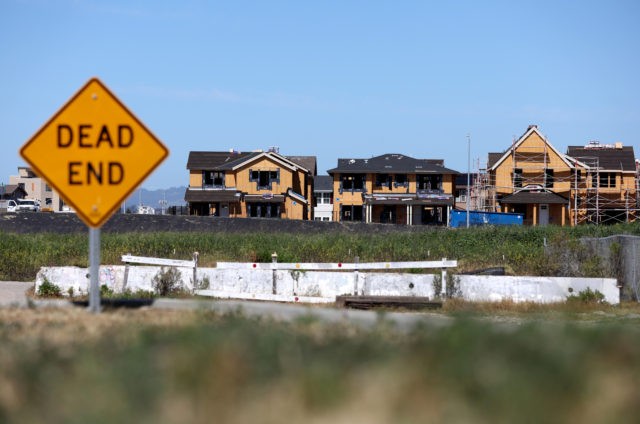Construction spending in the U.S. grew at a slower pace than forecast in March, heightening the risk of a broader economic slowdown after the economy unexpectedly contracted in the first three months of the year.
Construction spending grew by just one-tenth of a percentage point to a seasonally adjusted annual rate of $1.730.5 billion, the U.S. Census Bureau said Monday. The consensus forecast was for construction spending to grow by 0.8 percent.
The lower-than-expected figure is not adjusted for inflation. The Producer Price Index for intermediate demand rose 1.4 percent in March and the index for materials and components used in construction rose 1.5 percent. The index of construction services for rose 1.2 percent. This suggests that real construction spending fell, indicating a fall-off of activity.
Compared with a year ago, the March spending figure is 11.8 percent higher. That lags behind the 23.2 percent gain in the index for materials and components and the 14 percent gain in prices for construction-related services.

Private sector construction rose 0.2 percent. Residential construction was up one percent and nonresidential construction was down 1.2 percent from February. Public-sector construction fell 0.2 percent.
The Association of Builders and Contractors warned that a recession “could be around the corner.” More:
“March’s construction spending numbers aren’t adjusted for inflation and are actually worse than they look,” said ABC Chief Economist Anirban Basu. “While overall construction spending rose 0.1% in March, largely because of the strength in multifamily residential construction, construction spending was down in real terms. Nonresidential construction performance declined because of weakness in segments like commercial (-1.9%) and amusement/recreation (-2.1%).
“Even though nonresidential construction spending levels are significantly short of what they were pre-pandemic, many contractors indicate that they are operating at capacity, according to ABC’s Construction Backlog Indicator,” said Basu. “This speaks to how challenging the economic environment is becoming, with contractors wrestling with workforce skills shortages and sky-high materials prices. The elevated cost of construction service delivery helps explain why more projects are not moving forward as project owners are forced to wait.
“Circumstances could become easier or more challenging for contractors during the months ahead,” said Basu. “The Federal Reserve’s stepped-up efforts to combat inflation will eventually translate into better pricing for key construction inputs. However, those same efforts will soften the economy. Many economists believe that a recession in America over the next 12 to 18 months has become virtually inevitable. Thus, even as delivering construction services becomes more affordable, demand for construction services, particularly private construction, may begin to fade.”
Office construction was flat compared with February and up 4.9 percent compared with a year ago. Commercial construction spending fell 1.9 percent but is up 15.5 percent from last year’s depressed level. Manufacturing construction fell 1.6 percent but is up 31.8 percent compared with the March of 2021.

COMMENTS
Please let us know if you're having issues with commenting.